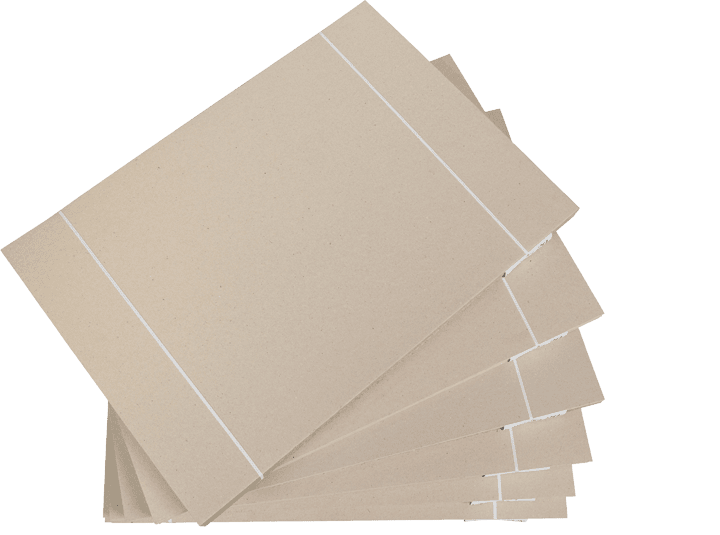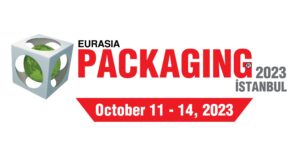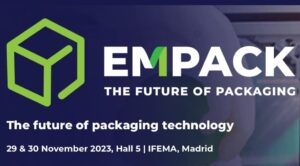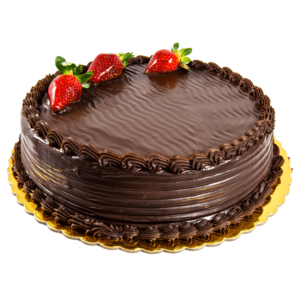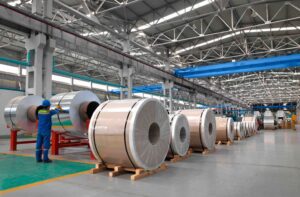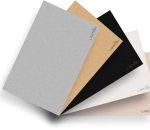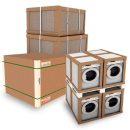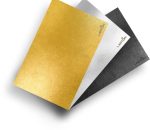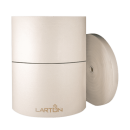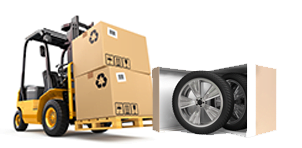The raw material of paper and cardboard is cellulose that is a very precious material. Cellulose is procured from specially grown plants and trees. The main reasons of preferring paper and cardboard for manufacturing are easy process, affordable carriage advantages and resistance. It can be produced infinitely many cardboard packages from various cartons in different qualities and quantities.
The raw material of the carton based materials is paper. It is also easy to treat the paper like cardboard. Among the various papers being produced nowadays, packaging papers are manufactured in different shapes. One of the most economical methods in packaging is paper and cardboard packages. Thanks to the technological development having increased recently, it can be produced more solid, thinner, slighter and cheaper cardboard with less raw material. Easy production and economic advantages make the paper and cardboard materials advantageous in packaging industry. Comparing to the other packaging materials, the prices of paper and cardboard are more affordable.
New designs are expanded cardboard packaging application areas.Corrugated cardboard is produced with two corrugated paper supported each other, and used alternatively to wooden materials in different areas.
Recyclable
Cardboard is recyclable 100%. Over 80% of cardboards in Turkey is recycled – this is the best recycling record among all packaging materials.
Renewable
The cardboard is a renewable packaging material since the paper used for producing cardboard is made out of wooden that is renewable source. Thanks to sustainable forest management, the wooden can be produced in infinite loop.
Reusable
The cardboard can be reused easily such different types as moving a house, making game stuff like a tower or castle for children or making a cove for pets.
Biologically Decomposable
Recycling is definitely the best way for dropping the cardboard, however it can be completely decomposed biologically, even if it is wasted out of recycling area.
The structural design of a box designates how to compete effectively in the market, and to deliver the goods firmly to the customer.
In this stage the manufacturer should know how the product is fragile, what kind of process should be applied to it, and transport and storage management and good and bad weather conditions for the product. Usage and durability tests should be applied to all the cardboard types.
After structural design of a box is generated, it is ready for sales, however it should be paid attention to structural features of the box, production expenses and production duration while pricing.
All products which need to be packed with corrugated cardboard should be packed in such a way that they are guaranteed to be protected, carried and stored safely and easily.
There are two cardboard types and both of them are recyclable.
As well as various coatings that such features can be developed as water resistance, grease resistance, visual quality, it can be used many cardboards to produce small folding boxes. The colour of cardboard can be diversified in accordance with the area where it is used.
In addition, the type of cardboard should meet such fundamental requirements as proper inking, adequate surface for quality printing, proper adhesive, and properly mounting without causing any damages of cracking, wrinkling or tearing during folding cardboard.
1. Cardboard or Chipboard
Cardboard is typically in the thickness of 0,010 inch or less, and essentially a thicker standard paper type. The production process of it starts with pulping the wooden (hardwood or sapwood) by distilling it to fibres with the mechanical methods or chemical processes.
The cardboard is a paper based material that is much thicker than the standard paper being used for writing. The added thickness makes it more solid, and let it be used for making boxes and other packing materials suitable for a lot of product types. Some cardboard boxes are as bellows:
Bakery boxes: Pie boxes, cake boxes etc. being used in patisserie.
Grain and Food boxes: this is a common and well-known box type that is used for packing grains, pasta and many processed foods.
Medicine and Cleaning Materials Boxes: This is used for packing medicines in pharmacy, and such cleaning materials as soap, shampoo, lotion etc.
Gift and Clothing Boxes: These are foldable paper boxes that can be stored, and reused easily by re-folding in various forms.
In some cases, the cardboard box is primarily package materials (i.e. bakery boxes). In some cases, the cardboard box is used for supplement package material for more protection (i.e. medicine and cleaning materials box and cigarette boxes).Also called ‘chipboard’, this cardboard is single-ply cardboard that you find on the back of a notepad in a thick form or that makes up your cereal box in a thinner form.
.
The production of cardboard is the two kinds of pulping process (bleached or non-bleached craft process and semi-chemical process) being applied typically. Craft process is to pulp the input by using sodium hydroxide and sodium sulphate mixture for separating the fibres binding the cellulose. When bleaching, it is added such supplement chemical materials as surface-active agents and foam to enhance the process effectiveness and quality. Other chemicals being used during bleaching can bleach the dark pigment of the pulp and this makes it more attractive for significant implements.
Semi-chemical processes refine the wooden with a mechanical process after a pre-treatment with sodium carbonate or sodium sulphate. The process is less intense because it does not disintegrate the fibre binding the cellulose, and can be carried out in lower temperature and in less excessive conditions.
Pulping Process
When separating the fibres, the diluted pulp obtained is applied onto the moving line. The water in the mixture is removed by vacuuming with vaporization, and then the fibres are pressed for consolidation and in order to remove over moisture. After pressing, it is heated with vapour by using cylinders, and if necessary, it is added extra resin or starch. For smoothing and finalising, it is used a range of cylinders.In every recycling process of the corrugated cardboard, the fibres that hold it together become shorter. When fibres become much thin for a strong corrugated cardboard, then they are used for cardboard. Cardboard boxes or chipboard boxes are used for grain, cake and pop boxes.
The cardboard is one of the most popular packaging materials, and the well-known one is corrugated cardboard box. It is slight, strong and durable, provides excellent protection for almost every product.
This is a thick cardboard that has an extra fibre layer among sheets. This extra layer make it stronger and much preferable for packaging and transporting. Nearly 81% of corrugated cardboard is recyclable. It can be recycled cardboards in every sizes and shapes.
In general, the boxes in small sizes are produced from cardboard, the boxes in big sizes are produced from corrugated cardboards.The corrugated cardboard is one of the most frequently used material in packaging industry, since it carries out five basic functions bellows:
• protects the product from possible damages that may occur during transportation, transportation and storage.
• stores the product properly until it is sold.
• informs, promotes and defines the product from the point of origin until it reaches the consumer
• is economical.
• Is recyclable.Simply put, cardboard is the thick, strong card arrangement that forms the walls of the box.This is the combination of materials that gives cardboard its high strength and resistance to impact and crush.
Corrugated cardboard is very strong due to its internal structure, which makes it a good insulator. The cardboard that makes up it is arranged in an accordion or zigzag-like pattern that gives strength to both sides of the box. This is held in place and secured on both sides by a sheet of paper called a groove. It can be made from different types of paper, such as kraft, firmly fixed in place with strong adhesive, and these outer layers hold the corrugated lid securely inside.The corrugated cardboard manufacturing process begins with making the inner corrugated cardboard – this is done by a large machine called corrugated cardboard. The board is fed into corrugated cardboard, heated and pressed to the form of the accordion above – this forms the central filling of the cardboard box wall. The corrugated outer liners are then fed into the corrugated door using a very strong adhesive and bonded securely. Once fixed using the adhesive steam, the flat full board can be cut into large sheets of various sizes used to create flat-packed cardboard boxes from your packaging supplier.From the paper mill, kraft paper roll is transported to a corrugated board or converting factory. In the factory, layers of kraft paper are folded and glued to form corrugated cardboard, then cut, printed, folded and glued to make boxes. At the beginning of this process, kraft rolls from the paper mill are loaded into a huge machine called corrugated cardboard. A typical corrugated board is as tall as a football field – 300 feet (91.44 meters).
Some rolls of kraft paper are used as corrugated media and others are used as a liner, the layers of kraft paper are glued on both sides of the media. After heating, gluing and pressing the kraft paper to form corrugated cardboard, the cardboard sheet is cut into large box blanks and then goes to other machines for printing, cutting and gluing.
The two outer layers of cardboard, called lining boards, are moistened so that it is easier to join the layers during formation. After the final corrugated board is formed, the components are dried and pressed with hot plates.
Corrugated boxes are a more durable form of cardboard box made of corrugated material. This material contains a corrugated layer compressed between two outer layers of cardboard and is used as shipping boxes and storage boxes due to their increased durability compared to cardboard-based boxes.
Finally, the completed batches of boxes are sent to the food manufacturer, toy manufacturer, auto parts distributor or any of the thousands of businesses that depend on corrugated cardboard packaging.
Corrugated cardboard sizes are characterized by corrugation profiles with a letter designation ranging from A to F. The corrugation profile represents the wall thickness of the box and is also a benchmark of the box’s stacking ability and overall strength. Corrugated boxes also include a type of cardboard that can be single-sided, single-walled, double-walled, or triple-walled.Single-faced cardboard is a single-layer cardboard that is glued to one side of the corrugated groove, which is often used as a product wrap. The single-walled panel consists of corrugations with a single layer of cardboard glued on both sides. The double wall is two corrugation sections and three layers of cardboard. Similarly, the triple wall is three corrugation sections and four layers of cardboard. The single-layer, thinner and slighter corrugated materials are used for some slight and strong boxes – these are called single-wall boxes. The materials for these boxes are made as strong as steel. The ultimate durable triple walled boxes have an impressive strength up to 500 kg, which are made of several layers of cardboard.Corrugated cardboard is also an excellent material for packaging – it can be used to securely hold items in place, and to place in boxes. Thanks to slightness, easy to use and cut means that it’s a great choice for many different uses. A small cutting blade, called a box cutter, can easily do this job and slide easily through the corrugated holes.Corrugated cardboard is what is typically referred when using the term of “cardboard” and it is usually used to make various types of corrugated boxes. Corrugated chipboard consists of several layers of cardboard typically, which are two outer layers and an inner corrugated layer. In addition, the inner corrugated layer is typically made from a different type of paper pulp, and this makes it a thinner type of cardboard that is not suitable for use in most cardboard applications but is quite suitable for corrugated cardboard as it can easily take a wavy form.
Cardboard Types and Applications
Anti-Static Corrugated Boxes
Anti-Static corrugated cardboard boxes help for managing the effects of static electricity. Static electricity is a type of electrical charge that can accumulate when there is no output for its current. When static electricity is generated, very light triggers can cause the electric charge current. Although the static charges are quite small, they can cause an unwanted or damaging effect on some products, especially electronics. For avoiding such situations, the material handling equipment kept for electronic transport and storage should be processed or produced with anti-static chemicals or substances.
Static electricity charges occur when insulating materials come into contact with each other. Insulators are materials or devices that do not conduct electricity. When an inflated balloon is rubbed against another insulation surface, such as a carpet, static electricity is generated around the balloon surface because friction imposes a load and there is no exit for accumulation. This is called the triboelectric effect.
Lightning is more dramatic another example of static electricity generation and release. The most common theory of lightning formation is that clouds rub against each other and intermingle and create strong electrical charges among themselves. That the water molecules and ice crystals in the clouds results in increasing the electric potential, by changing the positive and negative electric charges driven by wind and gravity. The electric potential is a term which refers to the scope of the potential electrical energy in a particular space. When the electric potential reaches the saturity, too large electric field develops and successive air zones turn much quickly into electrical conductors. As a result, the electric potential discharges into these conductive spaces in the form of lightning.
Essentially, static electricity in material processing goes through a much smaller, much less dramatic process. When transporting, cardboard develops a friction in contact with material handling equipment such as racks or elevators, as well as other cardboard boxes around it. Eventually, the electric potential becomes saturated and the friction causes a spark because of a conductor gap. These discharges may cause that electronics in a cardboard box are damaged.
There are various applications for anti-static materials and devices, and as a result there are various types of these materials and devices. There are two common methods of making an item static resistant; an anti-static chemical coating or an anti-static layer coating. In addition, some unprocessed cardboards are simply layered with anti-static material on the inside, and the conveyed materials are surrounded by this conductive material that protects them from any static build-up of the cardboard.
Anti-static chemicals usually contain organic compounds with conductive elements or conductive polymer additives. Simple anti-static sprays and coatings are cost effective and safe, so they are often used for cardboard processing. Anti-static sprays and coatings contain conductive polymers mixed with a deionized water and alcohol solvent. After application, the solvent evaporates and the residue is conductive. Because the surface is conductive, there is no static build-up when it encounters friction, which is common in handling operations.Other methods for protecting boxed materials from static buildup include physical attachments. Cardboard boxes can be lined inside with antistatic board or cardboard material in order to protect the interior from any static electricity problems. These liners can be produced from conductive foam or polymer materials, and they can be manufactured as additional parts that can be positionable inside the cardboard or removable.
Post boxes are available at post offices and other shipping agencies and are used to hold items to be shipped.
These boxes are designed to temporarily hold items for truck transportation during a change of residence or moving to a new home or facility.
Many pizza boxes are made from corrugated cardboard to provide protection during shipping and delivery and to ensure stacking the finished orders awaiting delivery.
Wax-impregnated cardboard boxes are corrugated cardboard boxes that are wax-inoculated or coated, and they are typically used for frosted shipments or applications where products are expected to be refrigerated for extended periods. The wax coating acts as a barrier to prevent the cardboard from being damaged by exposure to water, such as melting ice. Such perishable products as seafood, meat, and poultry are often stored in such boxes.
Cardboard stock, the thinnest type of paperboard, is thicker than most traditional writing papers but it still tends to bend. As a result of its flexibility, it is often used on postcards, catalog covers and some softcover books. Many types of business cards are also made from card stock, as they are strong enough to resist the basic wear and tear that can destroy traditional paper.
Only Clean and Dry Cardboard for Recycling
The cardboards should only be put in recycling bins as long as they are clean and dry. Wet or oily cardboard cartons such as pizza boxes or fast food boxes are considered contaminated waste and belong to garbage. Wet or contaminated items can get stuck in sorting equipment and destroy good, clean material. It should be removed plastic packaging or bags from cardboard boxes, in order to take advantage most effectively from the bins on the curb sides.
There may be some misunderstandings about what kind of cardboard can be recycled. Fortunately, unlike some of the other items, recycling cardboard is pretty straightforward. All of them can be recycled. They are high quality material that can be recycled multiple times. Recycling boxes and fibre can reduce the processing pollution by 95%, as they are already processed.You can contact with us from our contact information to get more detailed information on the subject, and also to have a meeting about cardboard types and cardboard prices.
